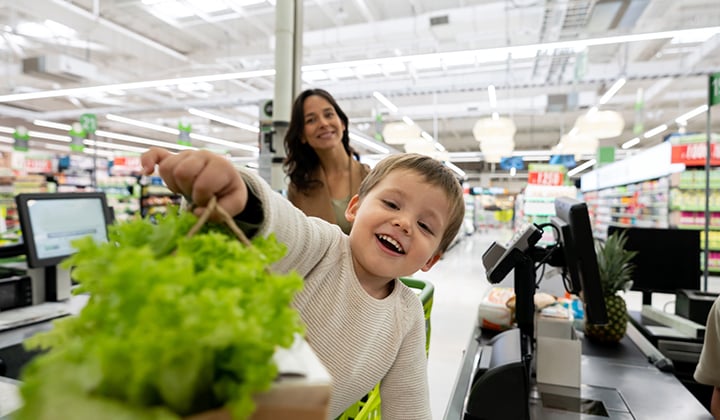
Almost every time you walk into the grocery store there is a new food item. It’s a wonder how the stores fit everything on the shelves. But have you ever wondered about the additives in all these foods? What’s really in our food besides food?
Chemicals (like dyes, pesticides, flavoring, preservatives, antibiotics, etc.) make their way into foods a few ways. Some enter food during the production and processing stages – long before they arrive to the stores. Some are added directly to the food, like preservatives. These chemicals help food last longer on the shelves, or even change the color to make it more visually appealing. Chemicals from packaging can also end up in food, instead of just protecting the food. These added chemicals may have negative health effects.
Health risks of chemicals
Right now, more than 10,000 chemicals are allowed to be added to food in the United States. Many of these chemicals are banned in European countries because they have been linked to health risks. The American Academy of Pediatrics shared a report highlighting the negative effects food additives have on children’s health. When children eat food with certain chemicals, it can affect their endocrine system, which controls the hormones of growth, puberty and fertility and can contribute to obesity. There is growing evidence that some chemicals found in our foods can also have a negative impact on how the brain develops. Others can promote cancer.
Scientists think that children may be especially susceptible to the effects of these chemicals because their detoxification systems are still maturing, and key areas of the body are still developing.
Did you know?
- Food and food products are not the same. Think of food as things that look like food in their original form – celery, carrots, nuts, apples. Food products are things that do not look like the original food – chips, cookies, chicken nuggets, and canned meat. Food products are more likely to have fewer nutrients and more chemicals added.
- Chemicals in plastic, including plastic wrappers and food containers, can break down when heated and transfer to food or drink.
- Some fruits and vegetables have more pesticides than others. These products typically have edible skin like strawberries, apples, grapes and other fruits and vegetables.
How to reduce chemical food exposure
This information may feel scary to read, but there are ways to lower our children’s exposure to chemicals. Here are a few ways.
- Read the nutritional label. One of the best ways to check for chemicals is by reading the food packaging nutritional label, usually found on the packaging. This will list all the ingredients in the food. Tip – if you don’t know what it is, don’t eat it. Healthier options will have less chemicals listed and ingredients you will know.
- Choose fresh or frozen options. Fresh food from a farmer’s market or your grocery store is best, and frozen food options, not food product are considered safer, too. Canned and processed foods are more likely to have added chemicals.
- Check what you are using for storing and cooking food. Chemicals can also get into our food by the way it’s stored and how it is cooked. Just before cooking or eating your food, wash your fruits and vegetables. Store what you can in non-plastic storage containers. When cooking, try to avoid nonstick pans. Nonstick coatings often wind up in the foods we’re cooking. Tip – use cast iron, stainless steel or glass cookware.
- Avoid heating plastic. Any time plastic is heated, the plastic chemicals can break down and seep out. This means don’t microwave plastic (including microwave dinners), don’t drink from a plastic water bottle left out in the sun or a hot car, and wash plastic items by hand instead of in the dishwasher. You may consider avoiding plastic containers altogether; it’s bad for human health and bad for the planet’s health. Tip – use a stainless steel water bottle.
- Wash your hands. Before cooking and before eating be sure to wash your hands. You want to get rid of any lingering chemicals.
- See where else you can make a change. Consider reading about the chemicals in your cleaning products at home, or cosmetics, like the sunscreen we use on kids. The Environmental Working Group (EWG) is a good resource to read about consumer products.
- Advocate. Children deserve healthy and nutritious foods. Speak to your local representatives in government about ways to help keep chemicals out of food.
It can be hard to make big changes, but try to not get overwhelmed. Even small changes, like washing your hands more or starting to read the nutritional labels can make a difference over time.
Resources:
Related articles:
- Organic, dairy-free and vegetarian diets explained in under 180 characters
- Toxic metals found in baby food: what should you do now

